All-male tilapia result in more uniform culture populations and faster growth
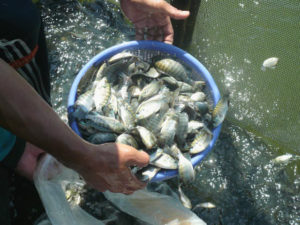
Tilapia are a paradox in terms of reproduction. The relative fecundity of the Oreochromis genus is low, at 6,000-13,000 eggs/kg/spawn. But this is compensated for by the high survival of fry due to their large size at hatching, their large yolk reserves, the mouth-brooding maternal care given until the fry are 10mm or larger and frequent spawning.
Tilapia present some challenges to fish culturists. Most Oreochromis species reach sexual maturity within six to eight months of hatching at sizes often less than 100 grams. Under some conditions, they mature in less than five months at 20 to 30 grams.
Unless controlled, the fish continue to reproduce, and offspring compete with the initial stock for food, often resulting in stunted growth and unmarketable fish. Therefore, all-male monosex culture of tilapia is preferred because of males’ fast growth and larger average size.
All-male methods
Several techniques have been adopted to produce all-male tilapia, including manual sexing, hybridization, genetic manipulation and sex reversal through sex hormone administration. Human error in manual sexing can be high, and the method also wastes the females. The problems with hybridization are the difficulties in maintaining the pure parental stocks that consistently produce 100 percent male offspring and reduction in egg fertilization. The use of hormones to produce monosex fish has been limited or prohibited in some countries over market and/or environmental concerns.
Therefore, the production of genetically “supermale” tilapia YY has been suggested as the safest, most efficient and effective technology. When crossed with normal female (XX) fish, YY tilapia produce 98 to 100 percent male tilapia (XY) or genetically male tilapia (GMT). All-male tilapia result in more uniform culture populations and faster growth compared to mixed sex populations.
Indonesian tilapia research
In Indonesia, Nile tilapia (Oreochromis niloticus) are considered an important culture species by the Indonesian Ministry of Marine Affairs and Fisheries. They have high economic value and are popular with local fish farmers, who find them easy to farm in well-established culture technology. There is high demand for tilapia, both for export and domestic markets. In addition, the species holds high potential for large-scale production.
Considering the significance of tilapia, research on developing genetically male tilapia has been conducted on Nile tilapia in Indonesia since 2001. As outlined in Table 1, treatment with hormone resulted in XY females, which were then crossed with XY males to produce YY males. Further crossing and hormone teatment generated YY females and mass production of all-male YY fish.
Aliah, Development of YY male tilapia, Table 1
| Time | Activity | Result |
|---|
Time | Activity | Result |
|---|---|---|
| July-December 2001 | Feminization through feeding diet containing estradiol from 10 days post-hatch for 30 days | 120 females |
| January-June 2002 | Feminized fish grow out Progeny test preparation to produce XY female | 59 females 47 females |
| July-November 2002 | Progeny test I – XY female crossed with XY male | 3 XY females |
| December 2002-June 2003 | XY female crossed with XY male to produce YY male; only YY and XY males selected for further steps | 421 YY males + 28 XY males |
| June 2003-November 2004 | XY female crossed with XY male; resulting fish then given feed containing estradiol to produce YY female | 129 XX, XY and YY females |
| December 2003-July 2005 | Progeny test II – XY crossed with YY male from XY to produce YY male | 19 YY males – 9, 100% male, 10, ≥ 96% male |
| August 2004-October 2005 | Progeny test III – YY, XY and XX females crossed with XY (normal male) to produce YY female | 2 females |
| December 2004-October 2005 | Progeny test III for female – YY, XY and XX | 2 YY females |
| July 2005-October 2006 | Multiplication of YY males through crossing YY male and YY female from progeny test | 663 fish |
| July 2006-October 2006 | Mass production of YY male; YY male crossed with YY female | All-male tilapia |
GESIT tilapia
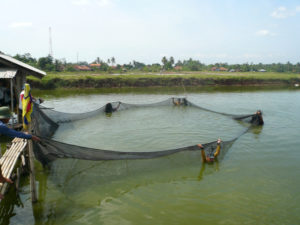
Genetically supermale Indonesian tilapia (GESIT) were officially released on December 15, 2006, through the Indonesian Ministry of Marine Affairs and Fisheries. Over 100,000 GESIT fish were distributed to 22 provinces by 2008.
Based on reports from Cianjur, West Java, GESIT reach a size of 6 to 8 cm size 15 days faster than earlier tilapia lines. Other culturists reported that 100 kg of GESIT fingerlings resulted in 1,300 kg at harvest – double the regular harvest.
In Situbondo, East Java, the monosex fish have been cultured in abandoned shrimp ponds with 12 ppt salinity. At a density of 10 fish per square meter with 1- to 2-cm fish, GESIT reach 300 grams after 120 days with 60 percent survival and a feed-conversion ratio (FCR) of 0.8. In Subang, West Java, GESIT fry demand 30 percent higher prices than local fry. It takes 60 days for them to reach 10-g size with FCR of 1.1 to 1.2, compared to 75 days for local fry with 1.4 FCR.
GESIT crosses
Further research has been conducted to measure the survival and growth performance of fry from GESIT crossed with normal female tilapia (JICA strain) in hapa nets in 300-square-meter concrete ponds with aeration. The densities were 250 fish/hapa net with three replicates. The temperature was maintained between 23.6 and 25.4 degrees-C, and dissolved-oxygen levels were 2.8 to 4.8 ppm. pH varied 6.5 to 8.3, and ammonia content ranged 0.04 to 0.24 ppm.
After 70 days, GESIT x JICA reached 11.46 grams ± 1.20 percent compared to JICA x JICA at 5.38 g ± 1.51 percent. Fig. 1 shows the growth curve. The FCR for GESIT x JICA was 2.11 – lower than JICA x JICA’s 3.04 after 70 days. Survival for GESIT x JICA was 82.8 ± 1.1 percent, compared to JICA x JICA at 89.1 ± 5.7 percent.
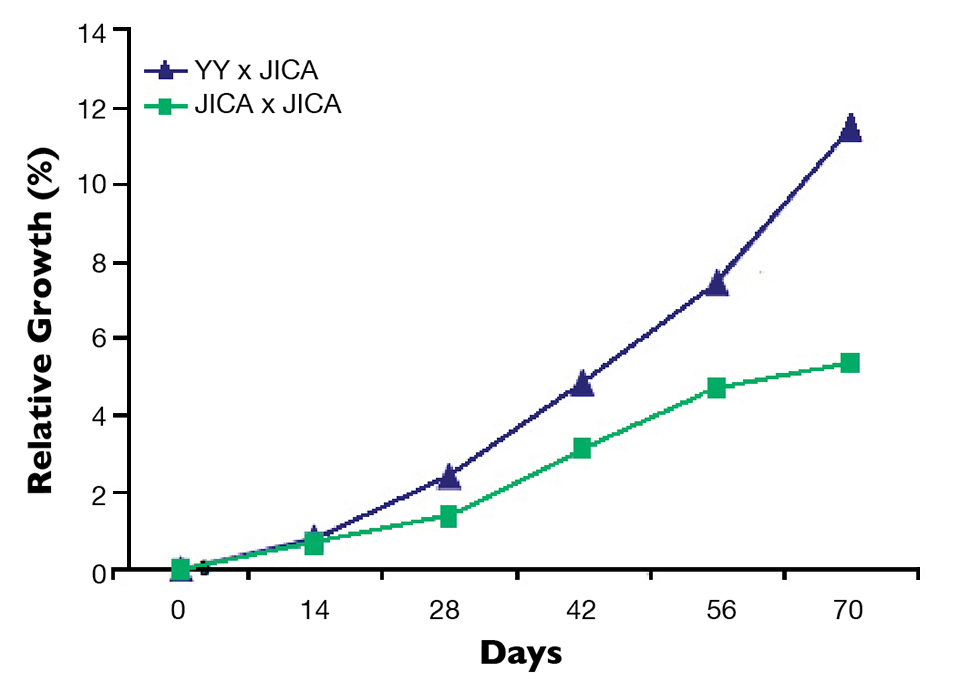
The GESIT x JICA cross resulted in 93.8 percent males, compared to 59.5 percent males for JICA x JICA.
(Editor’s Note: This article was originally published in the May/June 2010 print edition of the Global Aquaculture Advocate.)
Now that you've reached the end of the article ...
… please consider supporting GSA’s mission to advance responsible seafood practices through education, advocacy and third-party assurances. The Advocate aims to document the evolution of responsible seafood practices and share the expansive knowledge of our vast network of contributors.
By becoming a Global Seafood Alliance member, you’re ensuring that all of the pre-competitive work we do through member benefits, resources and events can continue. Individual membership costs just $50 a year.
Not a GSA member? Join us.
Authors
-
Ratu Siti Aliah
Agency for the Assessment and Application of Technology
Jalan MH.Thamrin 8
Jakarta 10340 Indonesia -
Komar Sumantadinata
Bogor Agricultural University
Bogor, Jawa Barat, Indonesia -
Maskur
Research Center for Freshwater Aquaculture Development
Ministry of Marine Affairs and Fisheries
Jakarta, Indonesia -
Sidrotun Naim
School of Life Sciences and Technology
Bandung Institute of Technology
Bangdung, Indonesia
Tagged With
Related Posts

Health & Welfare
10 paths to low productivity and profitability with tilapia in sub-Saharan Africa
Tilapia culture in sub-Saharan Africa suffers from low productivity and profitability. A comprehensive management approach is needed to address the root causes.
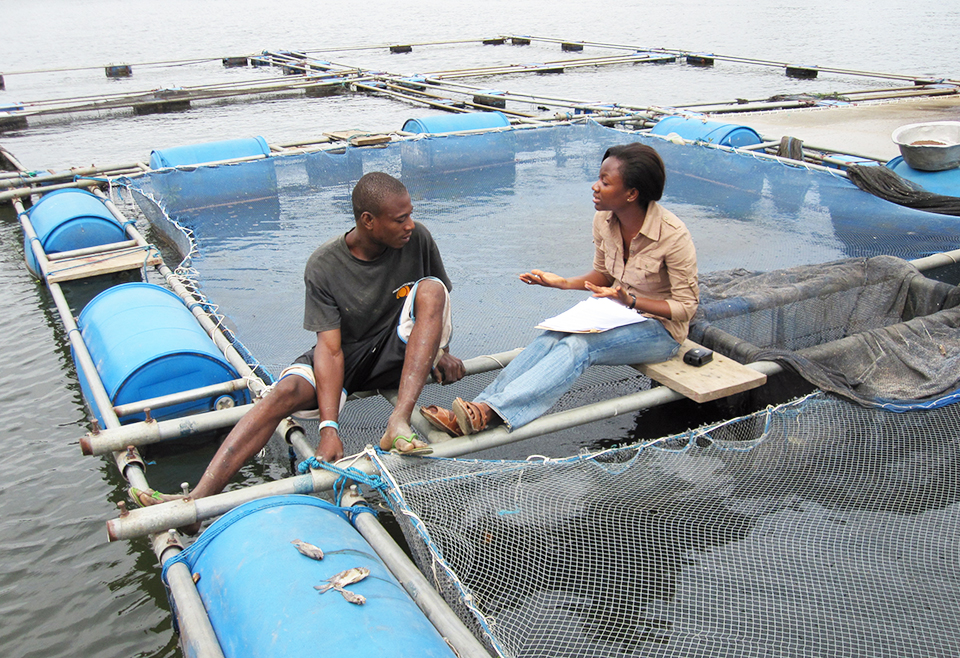
Health & Welfare
A look at tilapia aquaculture in Ghana
Aquaculture in Ghana has overcome its historic fits and starts and is helping to narrow the gap between domestic seafood production and consumption. Production is based on Nile tilapia.
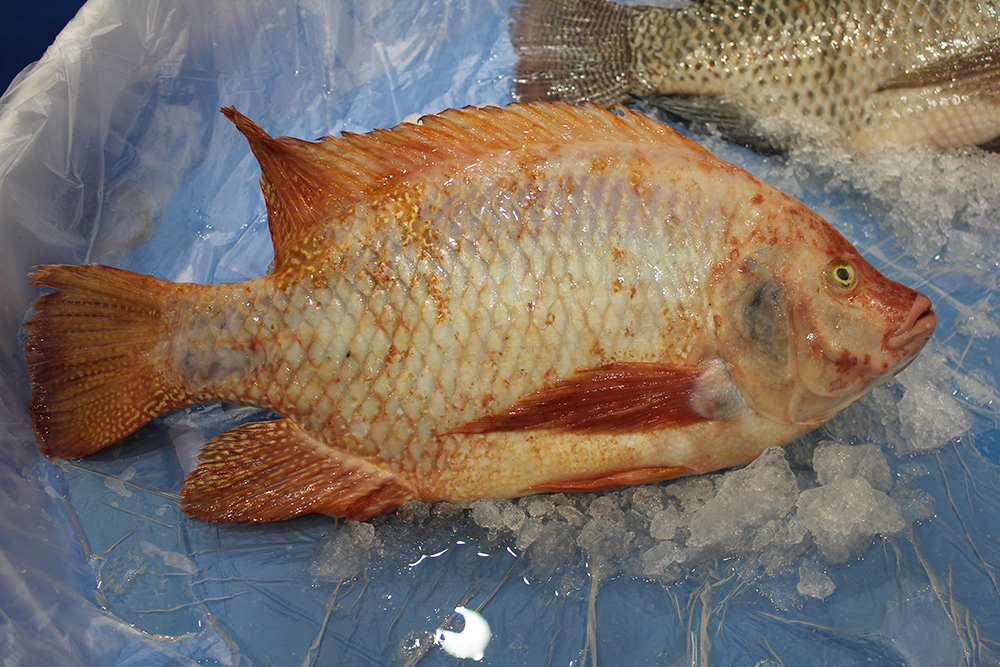
Intelligence
Adding value to tilapia to tap into U.S. market
New markets for tilapia and expansion of existing ones can be created by planning and implementing properly designed geographic strategies to meet discriminating consumer preferences. Low labor costs in most producing countries promotes value-adding by the production of fresh fillets.
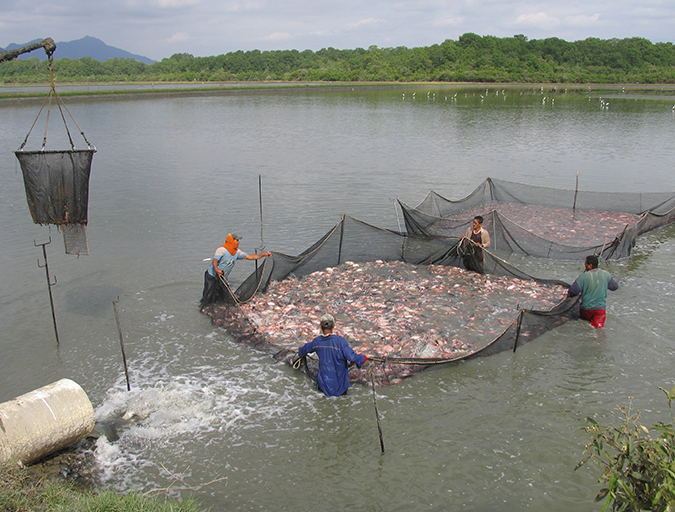
Responsibility
Addressing safety in Latin America’s tilapia supply chain
Over the last decade, the experience gained by many tilapia farmers combined with proficient programs implemented by local governments have significantly improved tilapia production in various Latin American countries like Colombia, Mexico, Ecuador and other important tilapia producers in the region.



